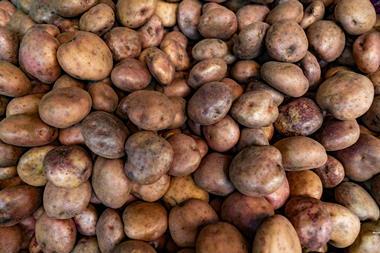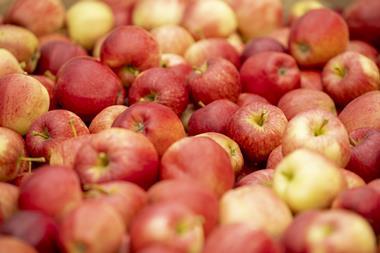Traditional British watercress growers have taken the fight to 'inferior' land-grown cress by applying for protected European status for their growing method.
The NFU Watercress Growers' Association this week filed an application for Traditional Speciality Guaranteed status for cress grown using flowing water. If successful, producers that grow their cress on dry land will have to rename their crops.
The application with scheme manager Adas must go through a consultation period expected to last until February 2010. Final approval from the EU could take up to two years.
Currently just 3% of watercress sold at retail comes from non-aquatic growers. However, traditional producers are concerned that that proportion will rise as new entrants to the market look to cash in on the popularity of the salad crop.
"These new producers are just trying to cut corners and pass off an inferior product as real watercress," said WGA member Steve Rothwell. "There are just a handful of these growers at the moment but if they continue to get away with this then more are sure to follow, which will put the whole tradition of growing watercress under threat."
Growers using soil rather than water-based production systems were piggybacking on the huge investment made by traditional growers in marketing the crop, he claimed. "We are all very angry about this as we have spent a lot of time and money on promoting the health benefits of watercress, which is why the industry is now reaping the rewards," Rothwell added.
The campaign has received the backing of David Bellamy, who claimed that traditional farms, most of which are in Hampshire, protect the headwaters of the UK's most prestigious chalk streams.
Sales of watercress, a semi-aquatic plant that is cultivated alongside streams and rivers where the springs rise, have doubled to £60m over the past decade. Traditional growers use the water directly from the spring underground and channel it into shallow cress beds.
The NFU Watercress Growers' Association this week filed an application for Traditional Speciality Guaranteed status for cress grown using flowing water. If successful, producers that grow their cress on dry land will have to rename their crops.
The application with scheme manager Adas must go through a consultation period expected to last until February 2010. Final approval from the EU could take up to two years.
Currently just 3% of watercress sold at retail comes from non-aquatic growers. However, traditional producers are concerned that that proportion will rise as new entrants to the market look to cash in on the popularity of the salad crop.
"These new producers are just trying to cut corners and pass off an inferior product as real watercress," said WGA member Steve Rothwell. "There are just a handful of these growers at the moment but if they continue to get away with this then more are sure to follow, which will put the whole tradition of growing watercress under threat."
Growers using soil rather than water-based production systems were piggybacking on the huge investment made by traditional growers in marketing the crop, he claimed. "We are all very angry about this as we have spent a lot of time and money on promoting the health benefits of watercress, which is why the industry is now reaping the rewards," Rothwell added.
The campaign has received the backing of David Bellamy, who claimed that traditional farms, most of which are in Hampshire, protect the headwaters of the UK's most prestigious chalk streams.
Sales of watercress, a semi-aquatic plant that is cultivated alongside streams and rivers where the springs rise, have doubled to £60m over the past decade. Traditional growers use the water directly from the spring underground and channel it into shallow cress beds.








No comments yet